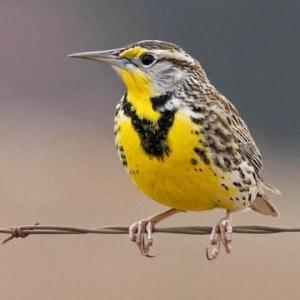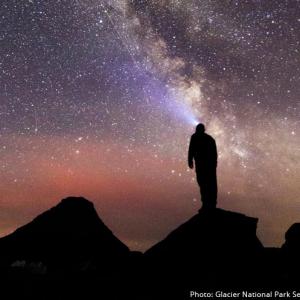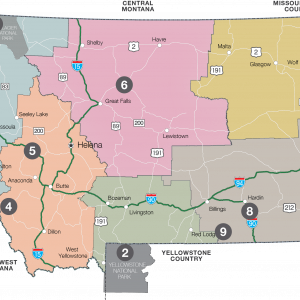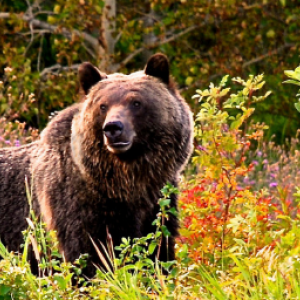5 Tips for hiking in Bear Country
~Montana Wilderness Association
I was awestruck as the large mother grizzly charged toward me. She was a beautiful creature with thick silvery fur and a huge head, and as I gaped at her, mesmerized by her beauty, a small voice in the back of my mind screamed at me to react. But I couldn’t - I was enthralled. When the bear was only a few feet from my passenger-side window, she wheeled around and ran into the forest following her two small cubs, both of whom had the same markings as she.
My hiking partner and I had been driving a narrow Forest Service road in the Whitefish Range, traveling to a trailhead a few miles from the Canadian border, when we rounded a curve and encountered the sow and cubs. Our unexpected presence in this remote area startled them and precipitated the bluff charge, which accomplished its goal of giving the cubs time to escape. This was a mother’s natural reaction to a perceived danger to her babies. Luckily, I was in a vehicle.
This wild public land west of Glacier National Park is home to a large number of grizzlies. They’re the iconic species that makes this place special, and we have the pleasure of living and hiking in their home. While we’re enjoying our wild places, it’s important that we remember that bears are present, and they’re just doing the things that bears do: eating, sleeping, mating, and raising their young. They are the creatures who rule this landscape, and it’s up to us to behave with respect.
Acting respectfully can reduce conflict, but it’s still smart to be prepared and alert when you venture into grizzly country. I’ve seen over 75 grizzly bears in the past 38 years and they’ve always tried to get as far away from me as possible, but that doesn’t mean I’m going to stop being vigilant.
Here are some things to remember when hiking in grizzly country
1. Keep your bear spray handy
Always carry bear spray, and make sure it’s accessible. Don’t keep it in your backpack - a charging bear won’t wait for you to find it. Make sure that the expiration date has not passed. Bear spray is a more effective bear deterrent than a firearm, so carry it at all times when you’re in bear county.
2. Know how to use it
If you see a bear, don’t run. Most of the time, the bear will run away from you. In the unlikely event that it does charge, stand your ground and don’t fire your bear spray until the bear is within 20 feet of you. Spray toward its feet, moving the can back and forth. The spray will float upward, forming an evil-smelling wall between you and the bear. One whiff of this highly concentrated pepper spray and the bear will be gone.
3. Know your bear etiquette
Again, don’t run from the bear. Stay calm, and move away slowly and sideways (you’re more likely to trip if you back up). Speak in low, soothing tones to indicate that you’re not a threat. Make yourself look as large as possible, but don’t make eye contact, which can be interpreted as aggressive behavior.
Some people have escaped bears by climbing trees, while others have been pulled out of trees by bears. Generally, climbing isn’t recommended. Climbing a tree takes time, which you probably won’t have, and bears can climb better than you can.
Playing dead should be your last resort, only to be employed if you can't avoid an attack. While this technique has worked for some people, being passive while a huge grizzly bear towers over you takes more courage than most of us have. (Note: Don’t play dead if it’s a black bear. Fight back instead.)
4. Travel in groups
This is probably the simplest and best way to avoid bear attacks: bears are far less likely to attack a group of three or more. Always make noise when hiking, especially when the visibility is not good, you’re hiking into the wind, or when natural sounds like water might cover your approach. Talking or singing are more effective than bear bells. Remember, bears generally want to avoid you, and will do so if you give them the chance. I have often wondered how many bears have heard me coming and melted into the brush as I passed by.
Don’t let fear of grizzlies keep you from experiencing the backcountry. Bear attacks are unusual, and by being respectful and prepared, you’ll reduce the likelihood of an unpleasant encounter even further.
Remember that when we’re in the backcountry, we are visitors in the bear’s home. We should respect their space like a good guest and aspire to give up the notion that humans are the dominant species. If we’re prepared and alert in bear country, we can continue to safely enjoy the wild places where these creatures live and rule.
- Debo Powers is a longtime MWA board member. She lives in Polebridge, Montana.





